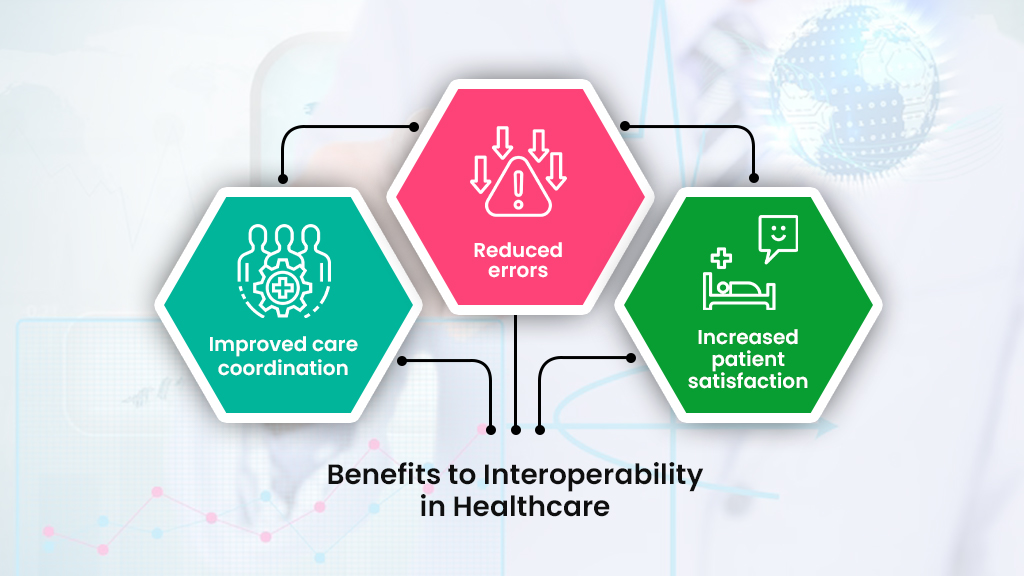Health
LOINC Codes: Bridging The Gap In Healthcare Data Exchange

Data automation has revolutionized the healthcare industry. From exclusively relying on voluminous documents, patient records can be accessed, stored, and processed electronically without compromising confidentiality.
Seamless information exchange is paramount to healthcare service delivery. While over 95% of American hospitals use automated systems, research has shown that healthcare data remains fragmented and lacks interoperability. This is where Logical Observation, Identifiers, Names, and Codes or LOINC comes in.
As data accumulates rapidly, this internationally recognized system plays a crucial role in bridging the gaps in data exchange. But what is LOINC, and how can it help? Read on to find out more.

Understanding LOINC
LOINC is a universal standard for identifying medical laboratory observations and clinical results. Each identifier comprises seven numeric characters representing different elements, including medical tests, clinical measurements, and laboratory analyses. At the same time, LOINC names typically reflect the name and abbreviation of the lab test done.
Coding Elements
Every LOINC code is composed of six parts that describe the different elements of a lab test, such as:
- Component: Also called analyte, refers to the substance being tested or observed. Examples include glucose, albumin, amylase, creatinine, and so on.
- Property: This section defines the characteristics of the analyte.
- Time: It refers to the interval in which the observation was done.
- System: It describes the entity from which the specimen was taken, for instance, urine, blood, etc.
- Scale: This determines how the result is expressed, whether quantitative, nominal, narrative, or ordinal.
- Method: This part briefly explains how the assessment was performed.
Some countries and regulatory agencies, including the United States Food and Drug Administration, require LOINC codes for SDTM for better efficiency and standardization across different health automation systems.
LOINC Adoption
Though first developed in 1994, it took years for LOINC codes to gain widespread adoption. While globally recognized, it isn’t mandatory in most countries for various reasons. LOINC is being used in over 196 countries, according to its official website.
Regenstreif Institute, a private and non-profit medical research organization, creates, maintains, and constantly updates these codes. The best thing about LOINC is that it’s free.

The Benefits Of Using Standardized Codes
The expanding adoption of LOINC benefits the global healthcare system in multiple ways. With this tool, providers can experience:
Improved accuracy and efficiency in recording, sharing, and aggregating medical records
Instead of relying on manually written descriptive texts, this classification system attaches unique identifiers to each test and observation. Doing so ensures that accurate data is recorded, with no essential information falling through the cracks.
For example, a data entry worker uses the corresponding code to identify the test whenever a lab procedure is performed and the result is out. Adopting uniform codes makes analysis and reporting easier for healthcare facilities.
Because of the standard terminologies, health facilities will have wider access to patient data and process them accordingly. For instance, if a hospital seeks to evaluate a potential treatment for a certain disease, it can measure the impacts of the novel and traditional treatments more accurately.

Enhanced interoperability between and among medical facilities
Trying to consolidate and make sense of disparate local codes used by different facilities can be time-consuming and mind-boggling—even to seasoned clinicians. But it’s a necessary exercise to deliver the best diagnosis and care.
LOINC enables seamless data integration across different EHR platforms. Its uniform coding system makes it easier for medical practitioners to understand a patient’s history even if they switch to another facility or provider. Patients likewise stand to save on medical expenses, as they don’t have to undergo duplicate testing.
Cost and time savings
Like other advanced electronic health record (EHR) systems, LOINC-enabled systems can auto-populate certain fields, preventing inaccuracies caused by typographical errors or mistyping entries.
Pre-defining thousands of medical tests and measurements helps healthcare providers save time creating and managing local codes. Over 95,000 LOINC codes are currently in the system, covering a wide range of medical testing fields.
But do you need to memorize thousands upon thousands of codes or keep a copy of the most commonly used terms? Not really. The system has a support tool called Regenstreif LOINC Mapping Assistant, or RELMA, to search the database automatically and find potential matches. This tool runs on Windows and can also help map local codes to the platform.
Conclusion
Health data automation makes sharing and processing data with consent easier. However, interoperability remains a pressing issue for healthcare providers worldwide.
The LOINC system underpins modern healthcare’s data exchange capabilities. These standard codes make it easier to aggregate and analyze data, leading to more reliable outcomes.
As a universal health data standard, the system offers significant potential to bridge systemic gaps that challenge global health networks. With worldwide adoption, clinical data is expected to flow seamlessly across linguistic, geographic, and institutional boundaries.
Health
Report Causes Pfizer Stock to Climb Approximately $1 Billion Acquired by Starboard

(VOR News) – According to a rumor that activist investor Pfizer Starboard Value has taken a holding in the struggling pharmaceutical business that is expected to be worth around one billion dollars, the stock of Pfizer (PFE) is on the increase in premarket trading on Monday.
This comes after the report was made public. The report was made available to the general public following this. Starboard Value was successful in moving forward with the acquisition of the position.
Starboard is said to have approached Ian Read, a former chief executive officer of Pfizer, and Frank D’Amelio, a former chief financial officer, in order to seek assistance with its goals of boosting the performance of the company, according to the Wall Street Journal. Read and D’Amelio are both former Pfizer executives.
The purpose of this is to facilitate the accomplishment of its objectives, which include enhancing the overall performance of the firm.
In their previous jobs, D’Amelio and Read were chief financial officers.
It is stated in the report that the hedge fund is of the opinion that Pfizer, which is currently being managed by Albert Bourla, who succeeded Read as Chief Executive Officer (CEO) in 2019, does not demonstrate the same level of mergers and acquisitions (M&A) discipline that Read did. Bourla took over for Read in 2019. Read was succeeded by Bourla in the year 2019.
Pfizer, a multinational pharmaceutical conglomerate, has made substantial investments in the acquisition of more companies that are involved in the research and development of cancer medicines.
These businesses have been acquired for billions of dollars. The biotechnology company Seagen, which was acquired by Pfizer in the previous year for a price of $43 billion, is included in this category. One of the businesses that can be classified as belonging to this category is Seagen.
In spite of the fact that the S&P 500 Index experienced a 21% increase in 2024.
No major trading occurred in Pfizer stock that year.
Due to the fact that the demand for Pfizer’s COVID-19 vaccines fell after the firm reached its pandemic peak in 2021, the share price of the corporation has decreased by over fifty percent since that time.
This drop has occurred ever since the company’s shares reached their maximum peak, which was during the time that this decline occurred. Not only have they not changed at all, but they have also remained essentially stable. This is in contrast to the S&P 500, which has gained 21% since the beginning of this year.
Recently, the corporation was forced to take a hit when it decided to recall all of the sickle cell illness medications that it had distributed all over the world.
Fears that the prescription could lead patients to experience severe agony and possibly even death were the impetus for the decision to recall the product. In spite of the fact that Pfizer’s stock is increasing by almost three percent as a result of the news that followed the company’s decision, this is the circumstance that has come about.
SOURCE: IPN
SEE ALSO:
New Study Reveals Drinking Soda Pop Increases the Risk of Stroke
The Mpox Vaccine’s Protection Decreases Within a Year; Booster Requirements
Health
New Study Reveals Drinking Soda Pop Increases the Risk of Stroke

A recent report from global research indicates that excessive consumption of coffee or soda pop is associated with an increased risk of stroke, although the intake of black and green tea is correlated with a reduced risk. Excessive consumption of soda pop or coffee warrants caution!
Recent research indicates that it may substantially elevate the risk of stroke.
Consuming four cups of coffee daily elevates the risk of stroke, according to studies, although ingesting 3-4 cups of black or green tea daily typically offers protection against stroke. Additionally, consume more coffee; it may reduce your risk of mortality.
Recent findings from global research studies co-led by the University of Galway and McMaster University, alongside an international consortium of stroke researchers, indicate that soda, encompassing both sugar-sweetened and artificially sweetened variants such as diet or zero sugar, is associated with a 22 percent heightened risk of stroke. The risk escalated significantly with the consumption of two or more of these beverages daily.
Stroke Risk Fizzy Drinks and Soda Pop
The correlation between fizzy drinks consumption and stroke risk was most pronounced in Europe, the Middle East, Africa, and South America. Women exhibit the most elevated risk of stroke from bleeding (intracranial hemorrhage) associated with fruit juice beverages. Consuming over 7 cups of water daily diminishes the likelihood of stroke due to a clot.
Researchers observed that numerous items advertised as fruit juice are derived from concentrates and have added sugars and preservatives, potentially negating the advantages often associated with fresh fruit and instead elevating stroke risk.
Fruit juice beverages were associated with a 37 percent heightened risk of stroke resulting from bleeding (intracranial hemorrhage). Consuming two of these beverages daily increases the risk thrice.
Consuming over four cups of coffee daily elevates the risk of stroke by 37 percent, although lower consumption levels do not correlate with stroke risk. Conversely, tea consumption was associated with an 18-20 percent reduction in stroke risk. Additionally, consuming 3-4 cups daily of black tea, such as Breakfast and Earl Grey varieties, excluding green and herbal teas, was associated with a 29 percent reduced risk of stroke.
Consuming 3-4 cups of green tea daily was associated with a 27 percent reduction in stroke risk. Notably, the addition of milk may diminish or inhibit the advantageous effects of antioxidants present in tea. The lower risk of stroke associated with tea consumption was negated for individuals who added milk.
Disclaimer: This article is intended solely for informational reasons and should not be considered a replacement for professional medical counsel. Consistently consult your physician regarding any inquiries pertaining to a medical problem.
Related News:
Starbucks Faces Sales Decline Amid Price Fatigue and Rising Competition
Starbucks Faces Sales Decline Amid Price Fatigue and Rising Competition
Health
Following a Diagnosis of Breast Cancer, What Else Should You Know?

(VOR News) – Even though breast cancer affects one in eight American women, receiving a diagnosis can make a woman feel isolated.
Experts in breast cancer from the American College of Physicians (ACS) advise patients on how to manage their disease so that they may better cope with this awful information.
First, the kind and stage of breast cancer dictates the course of your care.
In addition to immunotherapy and chemotherapy, there are various surgical options available for the treatment of breast cancer.
Women of African descent are disproportionately affected by triple-negative breast cancer, an extremely aggressive form of the disease that has never proven easy to treat.
According to the American Cancer Society, pembrolizumab (Keytruda), an immunotherapy, has been shown to be helpful when combined with chemotherapy and is currently the recommended course of treatment for certain combinations of triple-negative breast cancer.
In her presentation, Dr. Katharine Yao said, “It’s really important that the patient and physician discuss the patient’s preferences and values when deciding what type of treatment to pursue and that they have an honest, individualized discussion with their care team.”
She is currently responsible for developing breast cancer treatment recommendations for more than 575 hospitals and institutions nationwide in her role as chair of the American College of Surgeons’ National Accreditation Program for Breast Institutions (NAPBC).
Yao, vice chair of research at Endeavor Health NorthShore Hospitals in New York, pointed out that each decision made about a patient’s treatment plan should take her preferences and diagnosis into consideration.
She ought to think about whether she would prefer a mastectomy—a surgical procedure that involves removing the entire breast with or without reconstruction—or a lumpectomy, which involves a surgical procedure that spares part of the breast tissue.
She stated that “the breast cancer you have may be very different from the breast cancer you hear about in your neighbor, colleague, or friend” in a press release issued by the American Cancer Society (ACS).
“Consider that while discussing breast cancer with others.”
Throughout your journey, it is critical that you look after your emotional health because having breast cancer may have a detrimental impact on your mental health.
“Getting a cancer diagnosis does not mean that everything in your life stops to be normal.” Director of the Fellowship in the Diseases of the Breast program at the Winthrop P. Rockefeller Cancer Institute at the University of Arkansas and state head of the American Cancer Society Commission on Cancer for Arkansas, Dr. Daniela Ochoa She thinks adding the burden of a cancer diagnosis and treatment to all the other pressures in life may be taxing.
“Managing stress and emotional health is vital component of a treatment plan.”
Ochoa recommends clinically trained psychologists and social workers who have assisted people in coping with cancer to anyone receiving treatment. Learning coping techniques might also be facilitated by joining cancer support groups or cancer wellness initiatives.
Breast cancer specialists say your care team is crucial.
The American Cancer Society (ACS) defines comprehensive care as having support at every stage of the procedure from surgeons, oncologists, patient navigators, nurses, social workers, psychologists, and other specialists.
After receiving a breast cancer diagnosis, women should see a surgeon or medical oncologist to explore their options; nevertheless, treatment shouldn’t be discontinued after just one appointment or after surgery is over.
Additionally, you can ask trustworthy friends or family members to accompany you to appointments and aid you with research or notes. They could serve as a network of support for you.
Yao stated in his talk that “one of the most important things is that patients should search out a team they have confidence in, that they trust will have their back when they need it, and a team they feel they can get access to and that will help them when they are in need.”
SOURCE: MP
SEE ALSO:
The Mpox Vaccine’s Protection Decreases Within a Year; Booster Requirements
COVID was a Paradigm Shift in Health Policymaking, Says Commissioner Stella Kyriakides.
Rwanda Reports 8 Deaths Linked To Ebola-Like Marburg Virus Days After It Declared An Outbreak
-

 News3 years ago
News3 years agoLet’s Know About Ultra High Net Worth Individual
-
Entertainment1 year ago
Mabelle Prior: The Voice of Hope, Resilience, and Diversity Inspiring Generations
-

 Health3 years ago
Health3 years agoHow Much Ivermectin Should You Take?
-

 Tech2 years ago
Tech2 years agoTop Forex Brokers of 2023: Reviews and Analysis for Successful Trading
-

 Lifestyles2 years ago
Lifestyles2 years agoAries Soulmate Signs
-

 Health2 years ago
Health2 years agoCan I Buy Ivermectin Without A Prescription in the USA?
-

 Movies2 years ago
Movies2 years agoWhat Should I Do If Disney Plus Keeps Logging Me Out of TV?
-

 Learning2 years ago
Learning2 years agoVirtual Numbers: What Are They For?
